
HISTORY OF FORT PITT
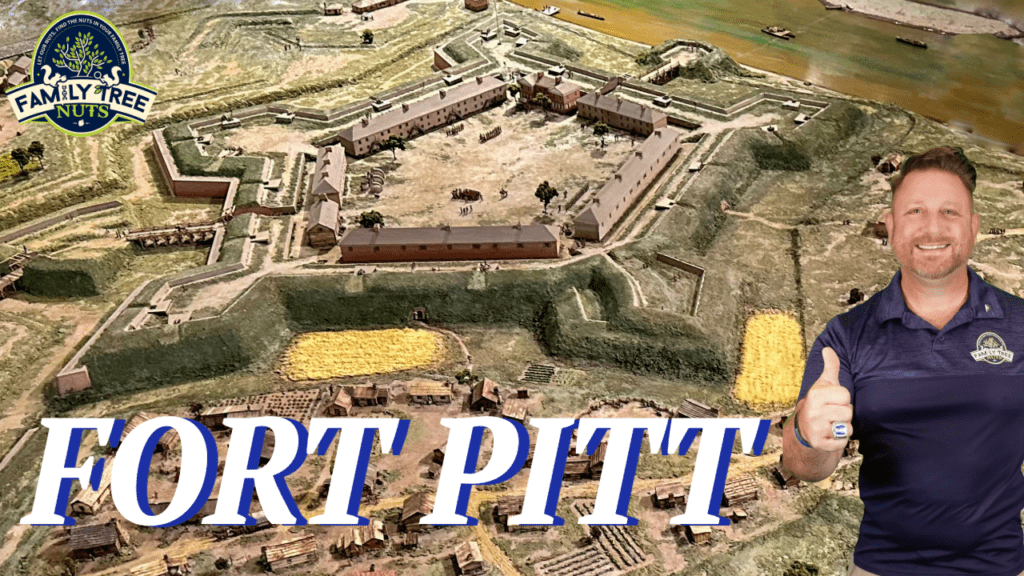
Fort Pitt was one of the most strategic spots in American history and it played a pivotal role in the current national borders of North America. For untold thousands of years this spot was a meeting place for native tribes for trade, and it became one of the main staging points for early American western migration. The Allegheny and Monongahela Rivers join here to form the Ohio River making it a place that an empire must control. Fort Pitt was an extremely important outpost during the French and Indian War, Revolutionary War, Northwest Indian Wars, and even the War of 1812. In this video, I’ll tell you the story of Fort Pitt, show you the sites, and explain its impact on our modern United States.
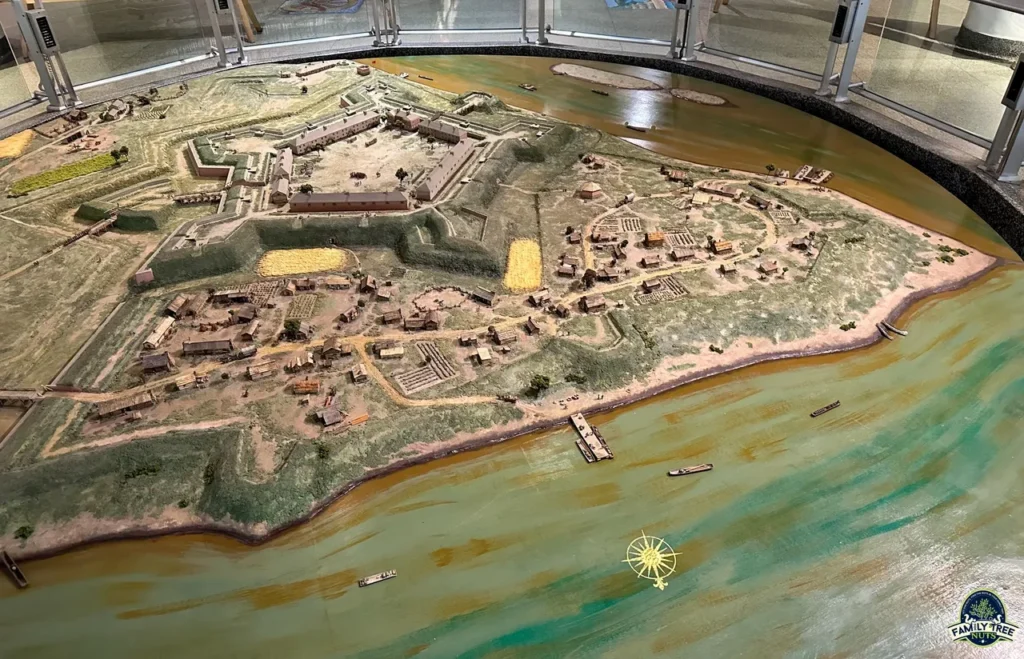
Recently visited Point Park, in Pittsburg, Pennsylvania, the site of Fort Pitt, and I wanted to share its history with all of you. At Family Tree Nuts, we build family trees for clients that either don’t know how, don’t have the time, or don’t want to pay those expensive membership fees. We also make history videos all over the United States, and a few countries, so if you like videos like these, be sure to subscribe to our channel.
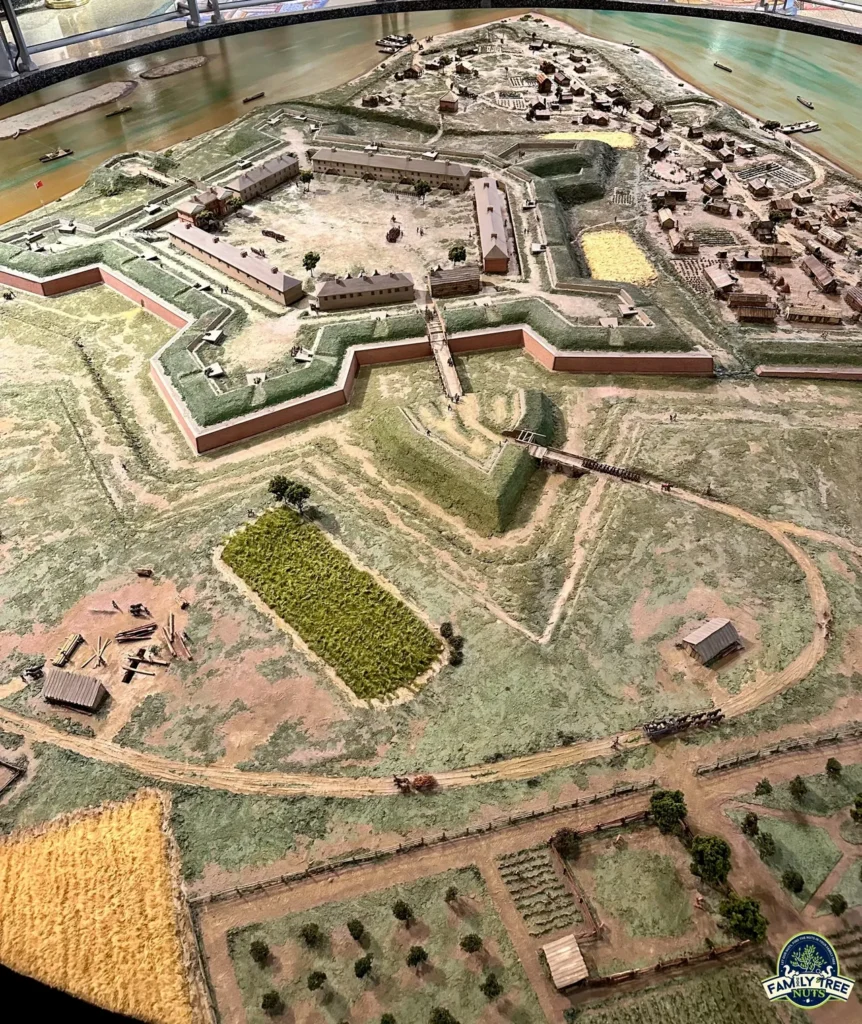
Now back to Fort Pitt. For untold centuries this important strategic spot was the home of several different American Indian tribes, and villages existed here off and on. It was a thick forest covering an area as large as Europe. The territory was claimed by several Indian tribes, as well as the French and British Empires. The Point was important because whoever controlled it, would have the advantage of controlling the trade on the Ohio and Mississippi Rivers.
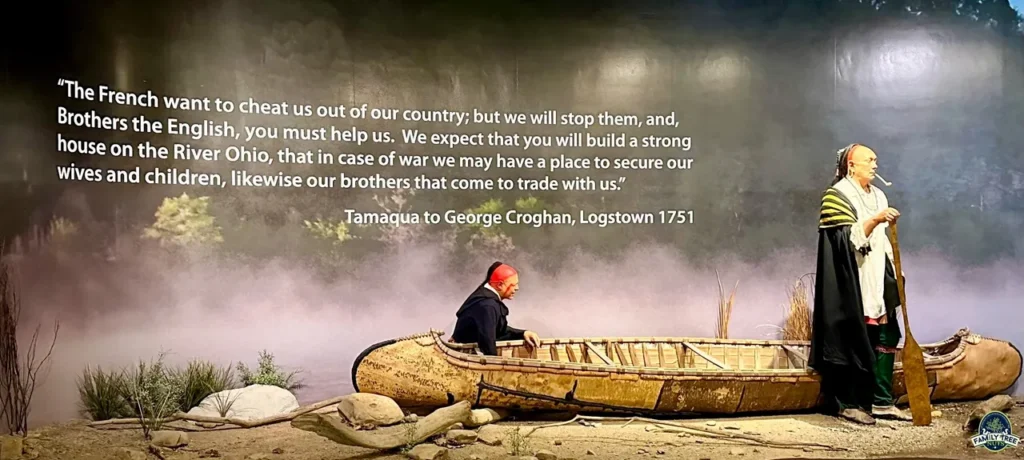
In 1751, Chief King Beaver of the Delawares invited the British to come build a fort at the confluence of the Ohio River. He said, “The French want to cheat us out of our country; but we will stop them, and, Brothers the English, you must help us. We expect that you will build a strong house on the River Ohio, that in case of war we may have a place to secure our wives and children, likewise brothers that come to trade with us.”
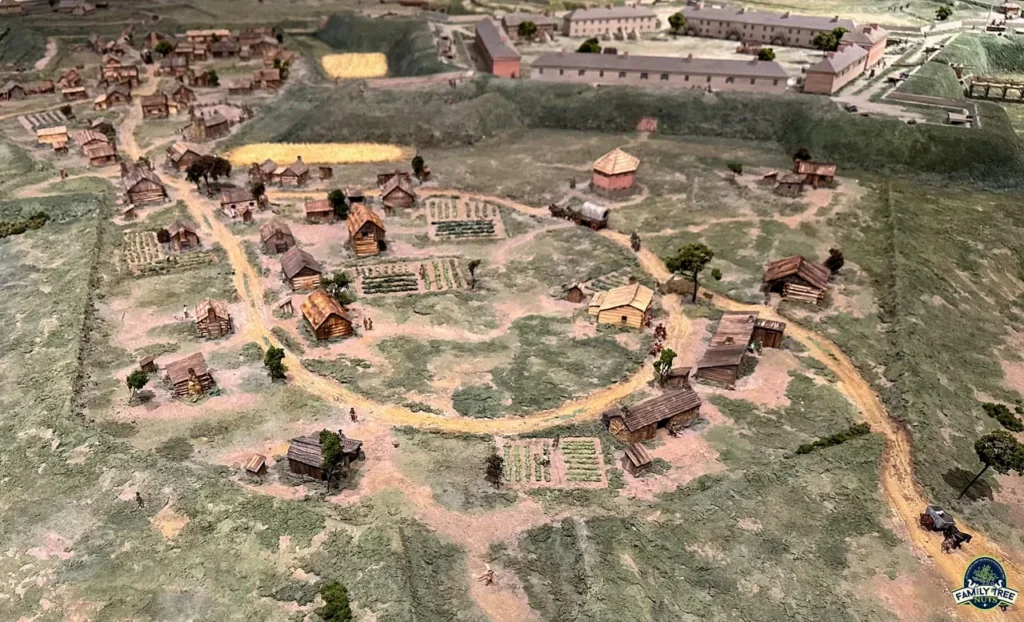
A few years later, in February 1754, the British sent forty men to this point, a site that George Washington had recommended, and quickly built a rough fortification that they named Fort Prince George. Just two months later, in April, they were pushed out by five hundred French troops. The British immediately sent, then Major George Washington, to lead an attack to retake the area but they were defeated and surrendered at Fort Necessity. The next year, General Braddock was given orders to take the territory back but failed in one of the worst defeats for the British Empire in the 1700s. Due to his knowledge of this frontier county, George Washington was selected as Braddock’s aide on this campaign. Another famous man from American history, Daniel Boone was a waggoner on this campaign.
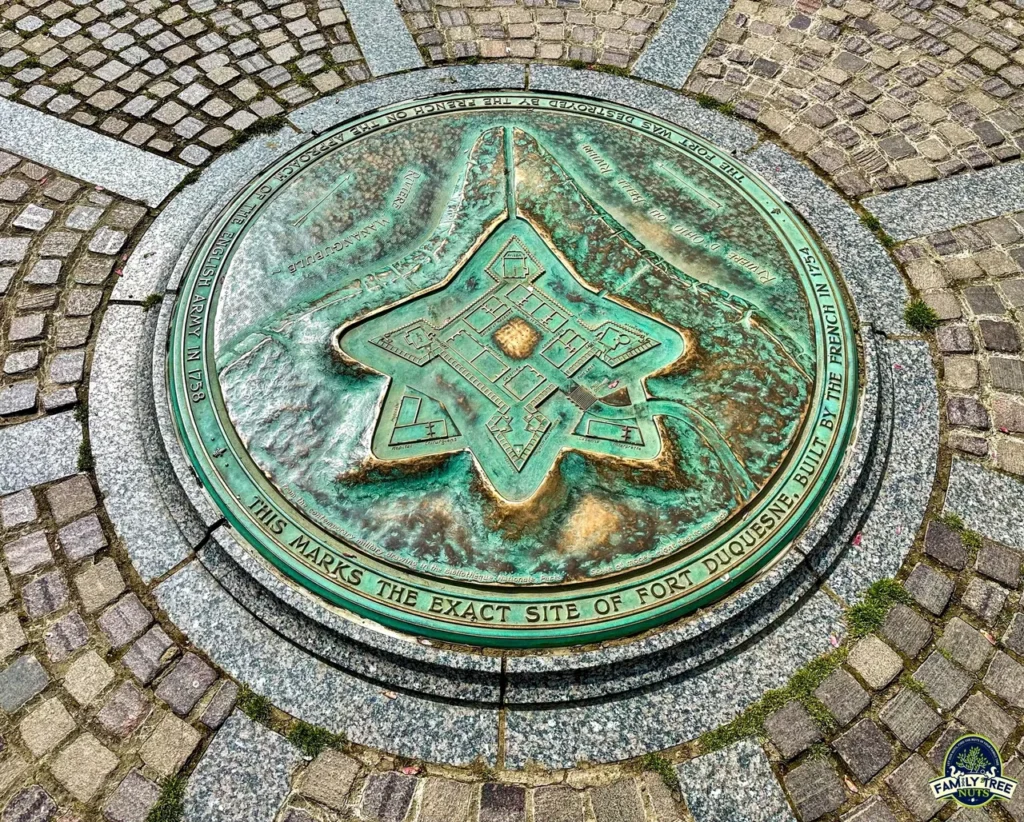
When the French pushed the British out of Fort Prince George, they immediately began building a fort of their own, just in time for the French and Indian War. They named it Fort Duquesne after the Marquis de Duquesne, the Governor General of New France. The fort was built of dirt and logs and was expanded in 1757. The Seven Years War exploded all over the world, and in North America it was called the French and Indian War. Battles were fought from eastern Canada to today’s deep south and pitted the French with their native allies, against the British with their native allies, and sometimes native tribes against each other without the French or English. It was an important time that created the destiny of the control of the continent. Had the French won this war, American’s may be speaking French today.
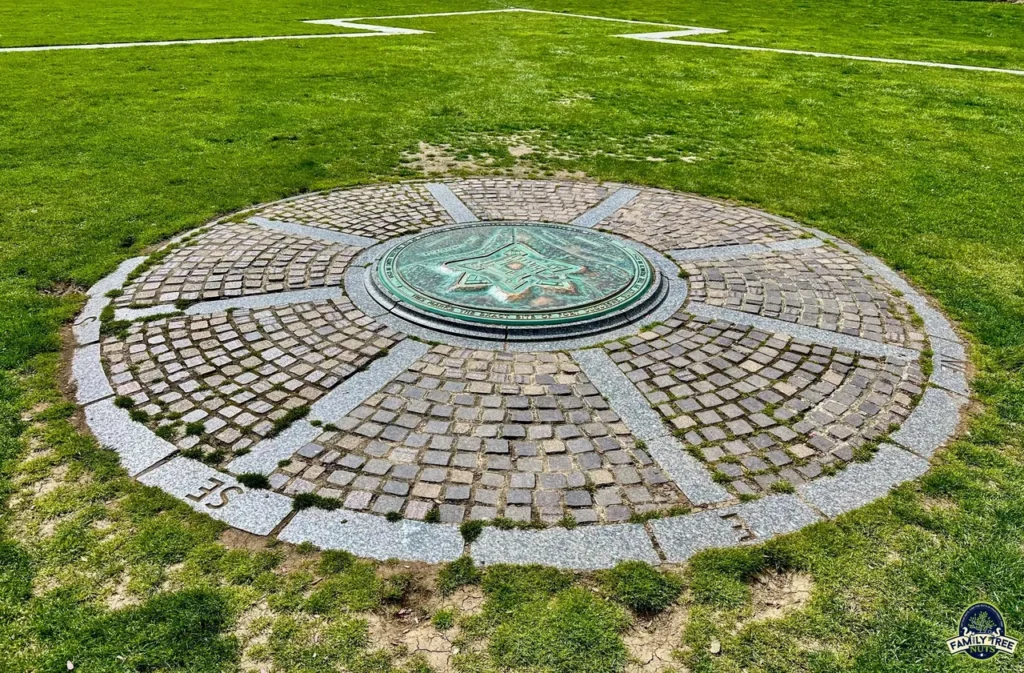
In 1758, the French in the Fort Duquesne area were defeated by British General John Forbes. George Washington commanded the 1stVirginia Regiment on this campaign. When the British were twelve miles away from the fort, the French sent their cannons by boat to the Illinois country, blew up and burned the walls of Fort Duquesne, and retreated from the territory. The fort’s footprint can be seen today by concrete markers along with a seal.
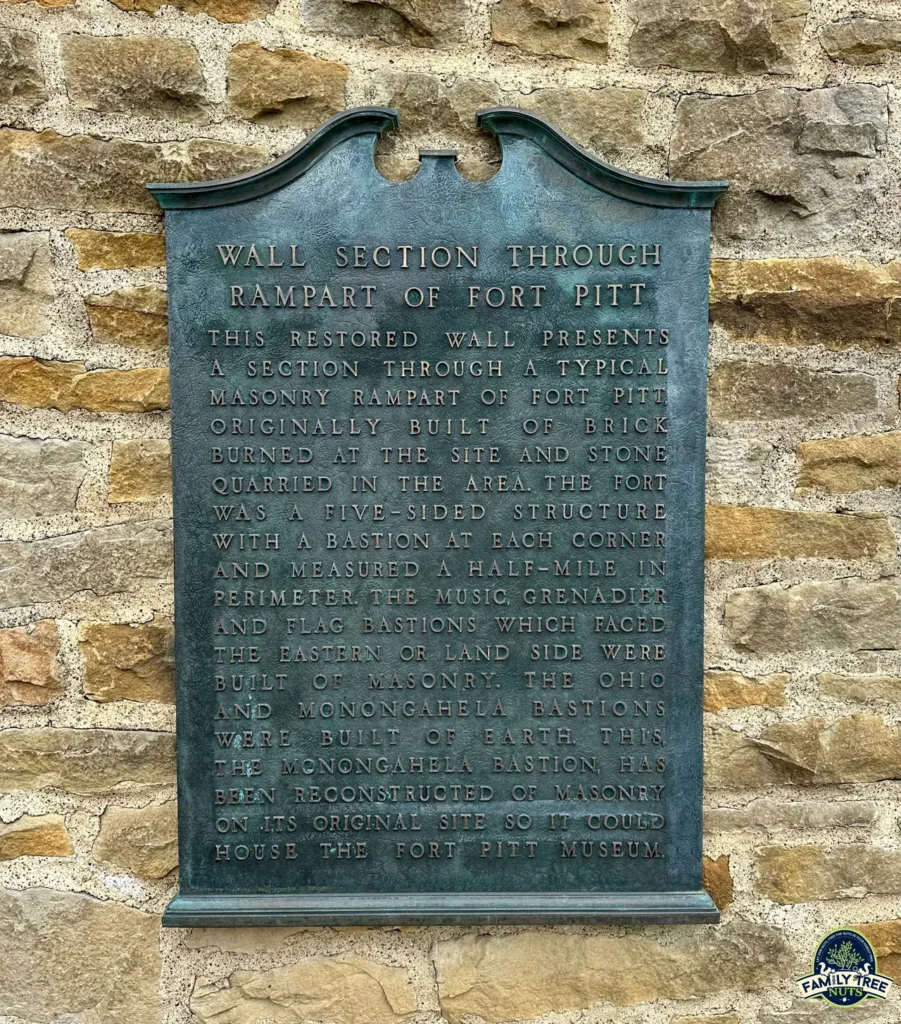
Upon taking possession of the area, General Forbes brought an army of 6,000 troops to the point. They built Fort Pitt and the town they called Pittsbourgh, after William Pitt the Elder, a British politician in the House of Commons, and Secretary of State for the Southern Department. The bricks for the fort were made onsite and the stone was quarried in the area. Fort Pitt had five sides and was a half a mile in perimeter. The eastern side, or land side, was built of stone and brick. The back sides, or sides facing the Monongahela and Ohio Rivers were made of dirt. Today one of the bastions has been reconstructed in the original spot and houses the Fort Pitt Museum.
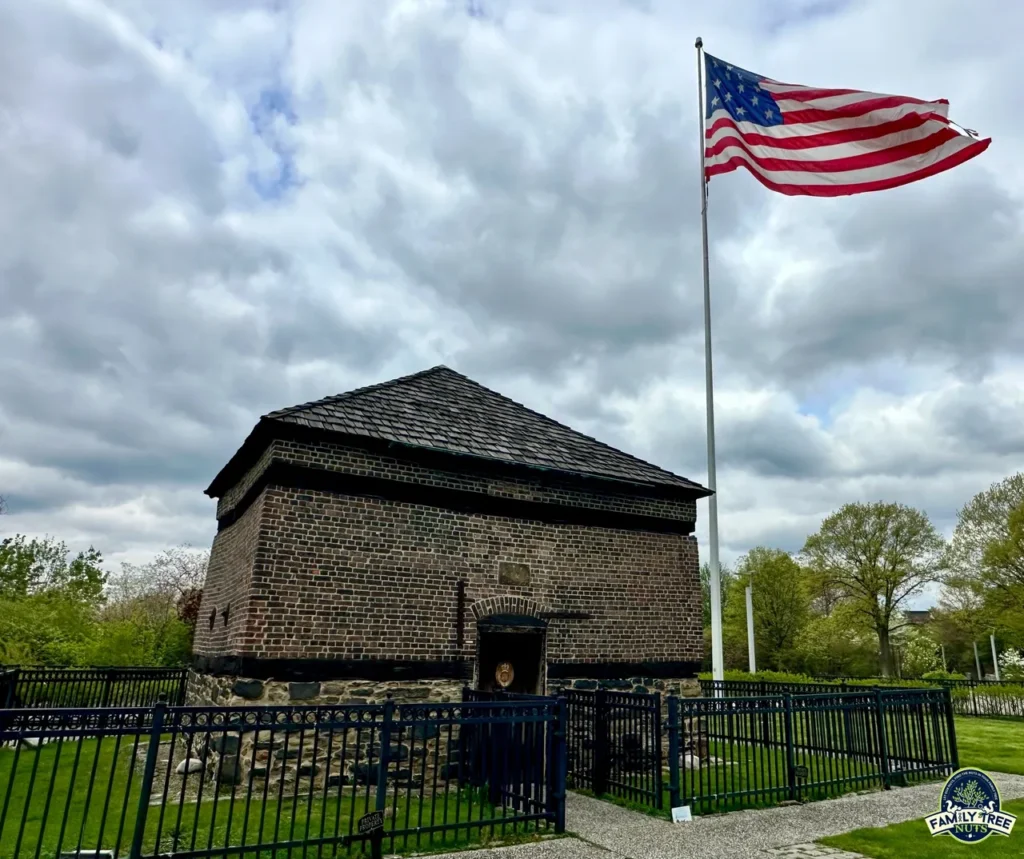
Fort Pitt had forty guns, 16,000 rounds of ammunition, and two tons of gunpowder, making it Great Britain’s strongest fortification in the west. The fort was built to hold one thousand troops but at the time of its construction rated one captain, three lieutenants, one surgeons mate, five sergeants, two drummers, and one hundred five privates.
In 1758, the Treaty of Easton was signed by the Delaware and Iroquois tribes with Pennsylvania. The Treaty stated that if the Delaware and Iroquois abandoned their support of the French, that the British would return east of the Appalachian Mountains to their eastern settlements. This was the only time that Pennsylvania returned land back to Indians. The Treaty of Easton was a major turning point for the British in the French and Indian War. Without the Delaware and Iroquois support, the French were weakened and eventually defeated. The British were not able to stop the thousands of settlers from pouring into the Pennsylvania back country, and the Indians soon learned that the treaty would not be upheld.
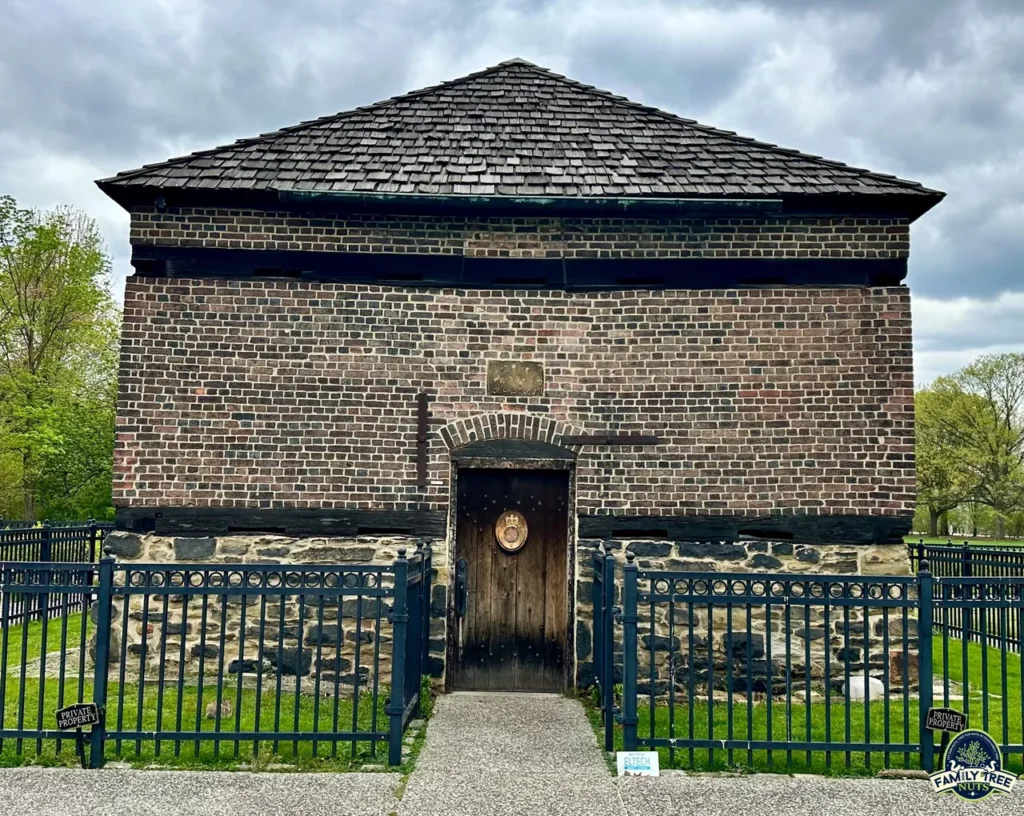
In the early 1760s, rumors began to circulate of an Indian uprising. The British began to cancel trade with them, especially in firearms. In 1763, during Pontiac’s Uprising, a confederation of Delaware, Seneca, and Shawnee attacked the fort. The fort’s guns were a menacing force on the attackers and the fort stood. Fort Pitt was never attacked again. During Pontiac’s War, ten British forts fell to the Indian warriors. To appease the Indians and end the conflict, the British made The Royal Proclamation of 1763, which forbade European settlement west of the mountains.
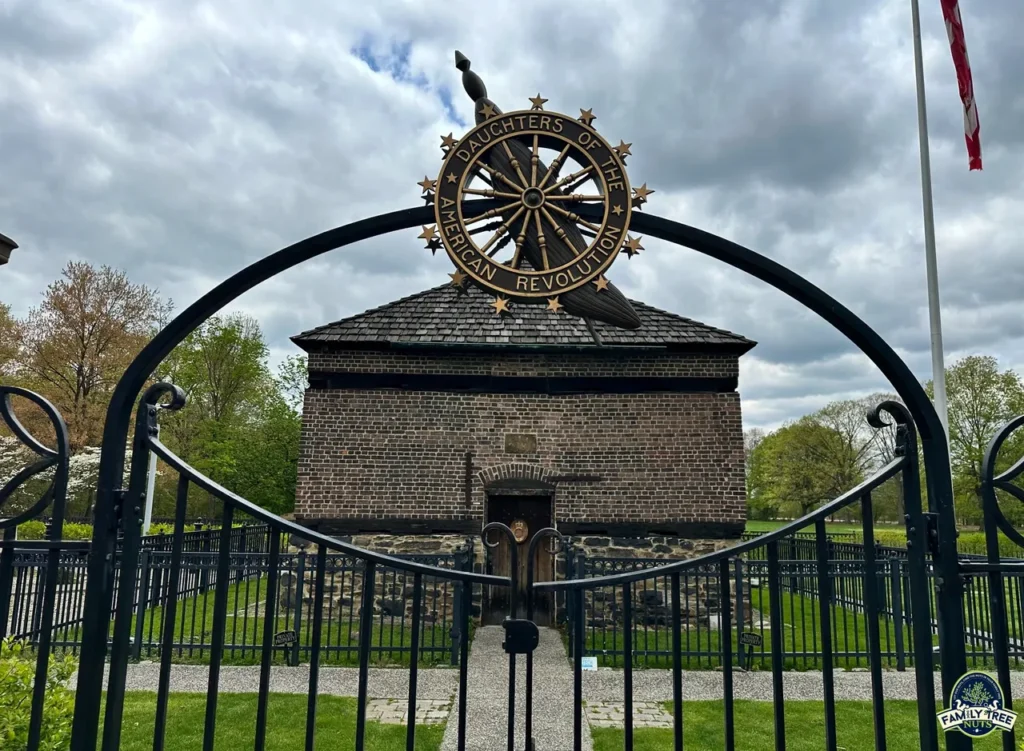
The area experienced extreme flooding in 1762 and 1763, and during these floods the fort walls made of dirt were partially washed away. Colonel Henry Bouquet ordered for five strong blockhouses to be built outside of the main fort, and on the river side. The inside of the blockhouses had two levels with tight firing holes all around. One of the blockhouses still stands and was completed in 1764. It is the oldest building in Pittsburg, and is officially, “the oldest building of authenticated date west of the Appalachian Mountains”. It was later occupied by families of prominence, but eventually the area around it had slums and warehouses. In 1894, the blockhouse was given to the Daughters of the American Revolution and was restored and made a public monument.
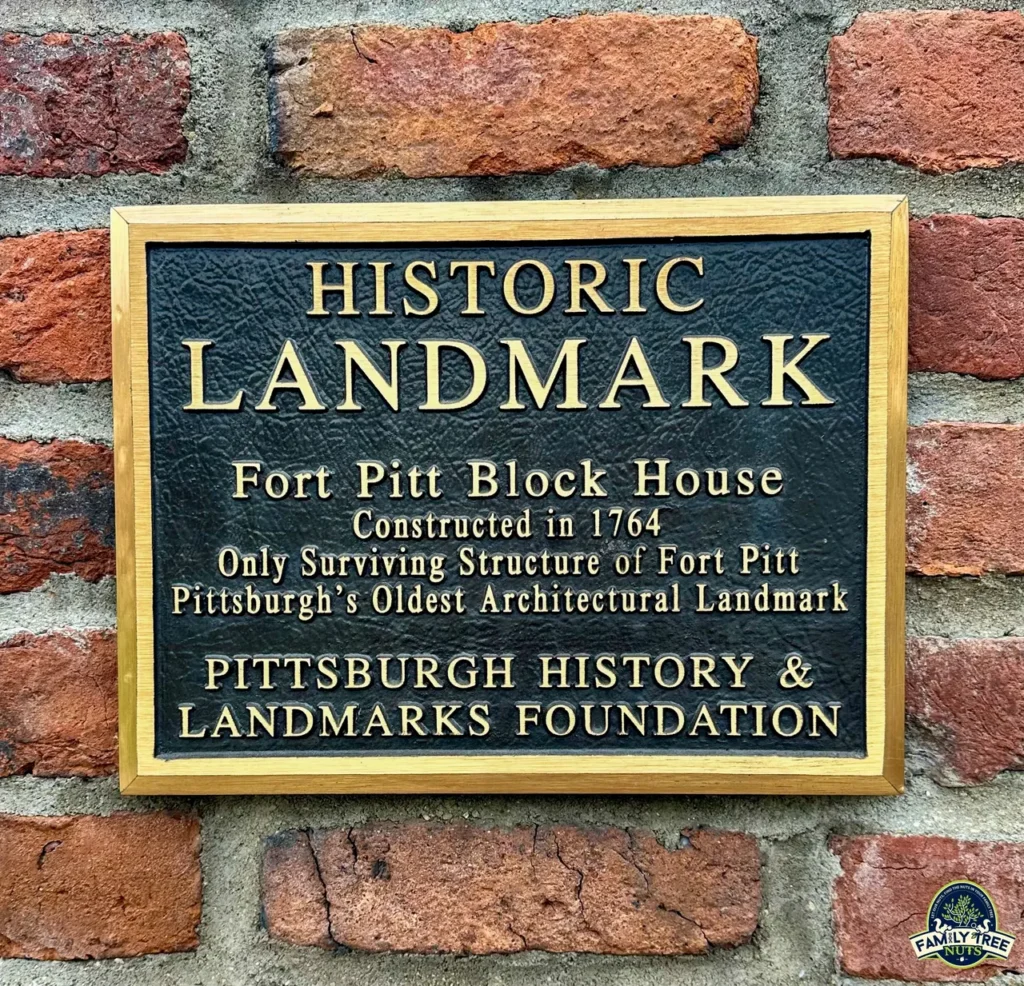
In 1768, the Treaty of Stanwix was signed in which the Iroquois sold large tracks of land to the British. The Delaware and Shawnee were also living in this area but were not part of the treaty. The British abandoned Fort Pitt in 1772 and destroyed anything of military value. The forts logs, cut stone, and approximately 1,244,160 bricks from the forts walls were sold to two local businessmen. Pennsylvania and Virginia began to compete for control of the territory. In the next few years, the area was claimed by both Pennsylvania and Virginia, and it wasn’t until 1780 that the infant federal government got involved and extended the Mason-Dixon Line further west, placing Pittsburg, in Pennsylvania.
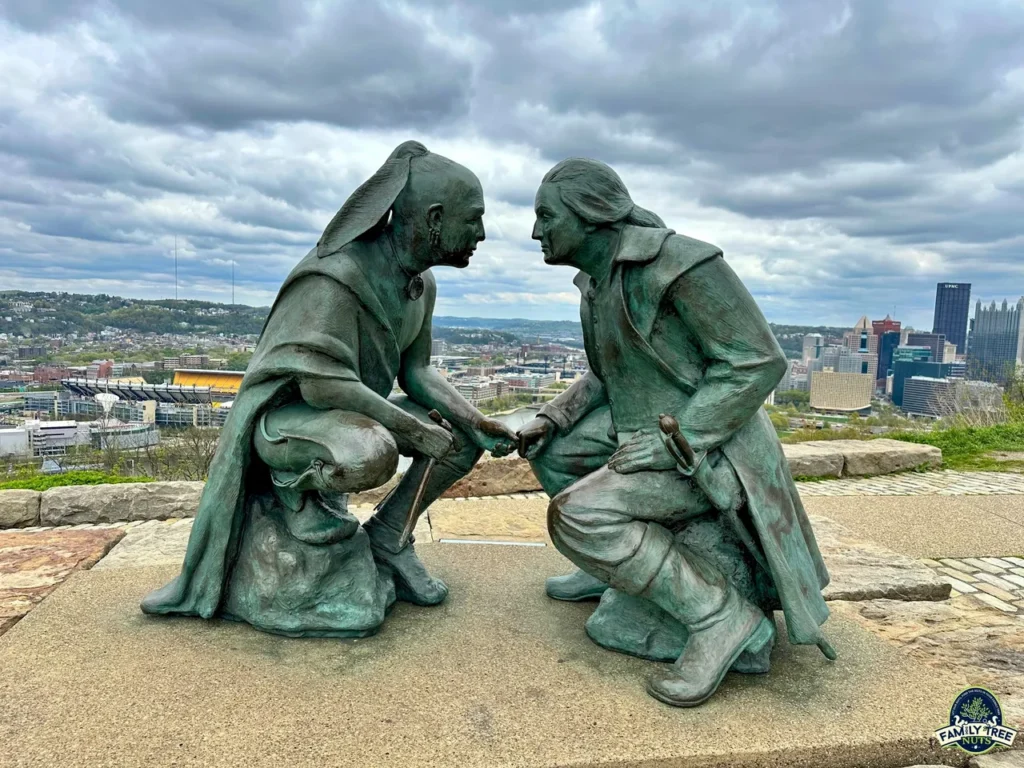
In 1770, George Washington met near here with the Seneca Chief Guyasuta. They had met seventeen years earlier, in 1753, when Guyasuta led the twenty-one-year-old Washington down the Allegheny River to Fort LeBoeuf to ask the French to leave the area. Of course, the French refused to leave, and the French and Indian War began soon after. This time, Washington and Guyasuta had an overnight fireside counsel and discussed the future of the Pittsburg area. They certainly had differences of opinion. The meeting has been depicted in the bronze entitled “Points of View”, by James A. West, in 2006. The artwork is on a hillside overlooking the point, at the confluence of the Allegheny and Monongahela Rivers where they become the mighty Ohio River.
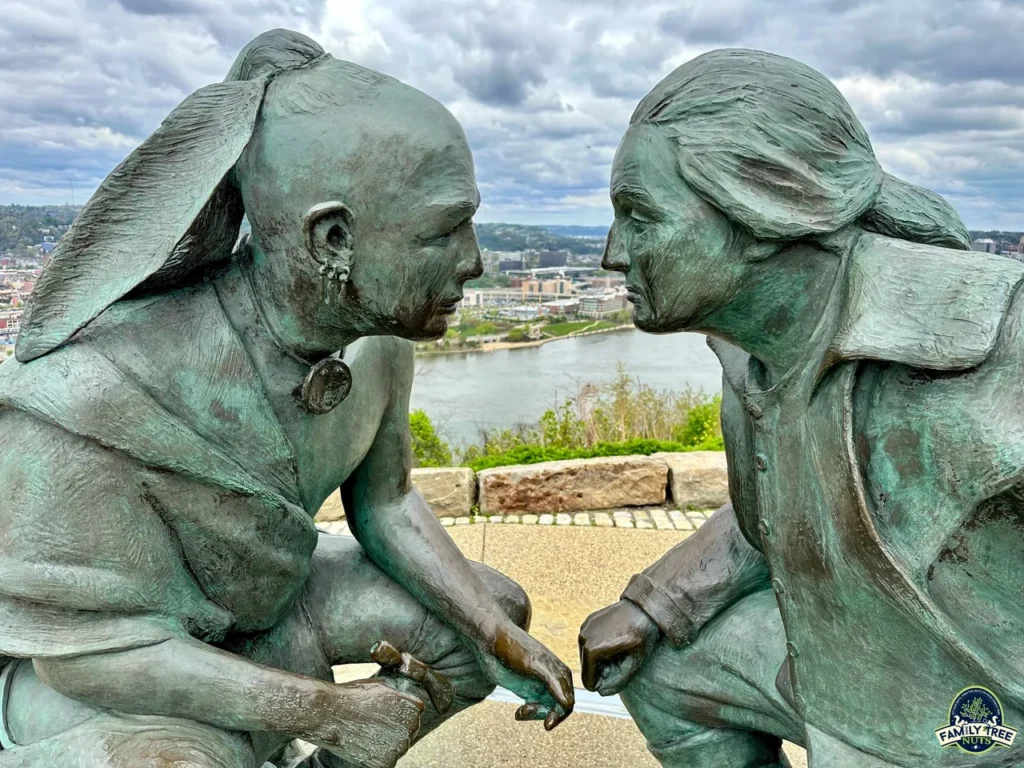
Pittsburg became an important place for trade and a staging point for expeditions further west into the Kentucky and the Ohio Country. Beginning in the late 1760s, Pittsburg along with the Cumberland Gap were considered entry points that one must pass in order to get to the areas that would soon explode with settlement. Thousands of families soon gathered in Pittsburg before making the dangerous trip down the Ohio River. 18,000 of them in the year 1788 alone.

Before the explosion of settlers into the west, Fort Pitt would become useful during the Revolutionary War. In 1776, Virginia took control of the fort and sent men to New Orleans to buy gunpowder, that was shipped to Philadelphia, and then brought to Fort Pitt. This action was critical in securing the location for the American cause. In 1777, the Continental Congress declared Fort Pitt the Headquarters of the Western District of the Continental Army.
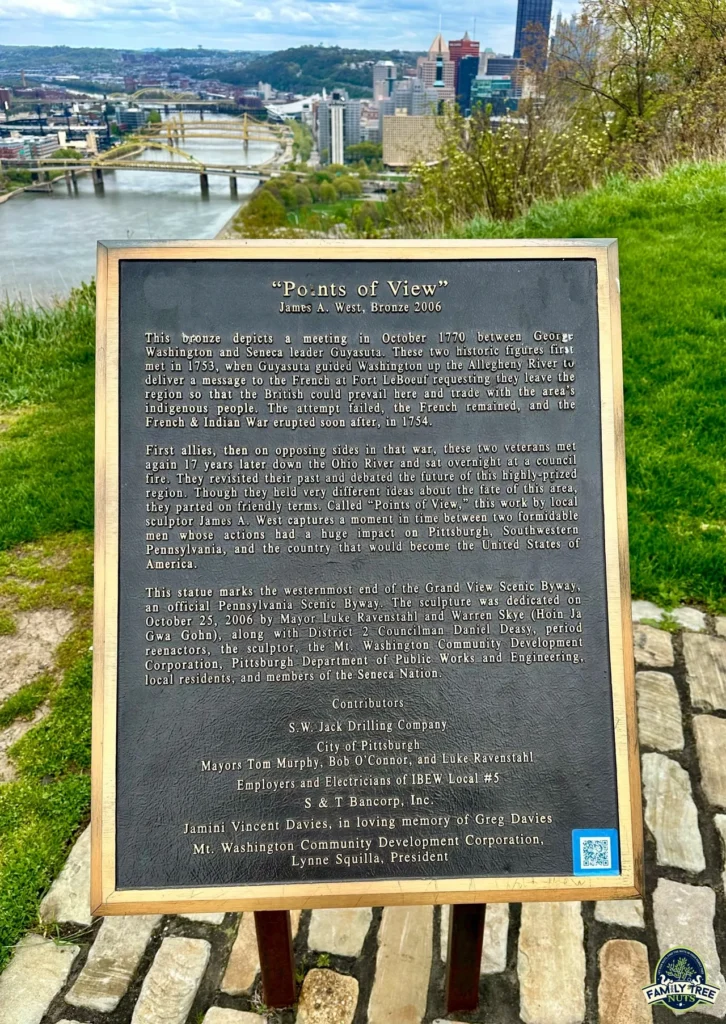
In 1778, Fort Pitt’s commander General Edward Hand was sent to punish Indians that had joined to fight with the British. Some of his men came upon Delaware and Munsee villages who were peaceful at the time. General Hand’s men killed women and a boy in what would soon be called “The Squaw Campaign”. General Hand was humiliated and asked to be relieved of command of Fort Pitt.
The fort was then commanded by General Lachlan McIntosh who launched an offensive against British held Fort Detroit. He established Fort McIntosh and Fort Laurens, but lack of supplies caused his to abandon his campaign and he also asked to be relieved of command of Fort Pitt. He was replaced by Colonel Daniel Brodhead. In 1779, Broadhead was ordered to march toward Fort Niagara to destroy hostile Indian towns and fields.
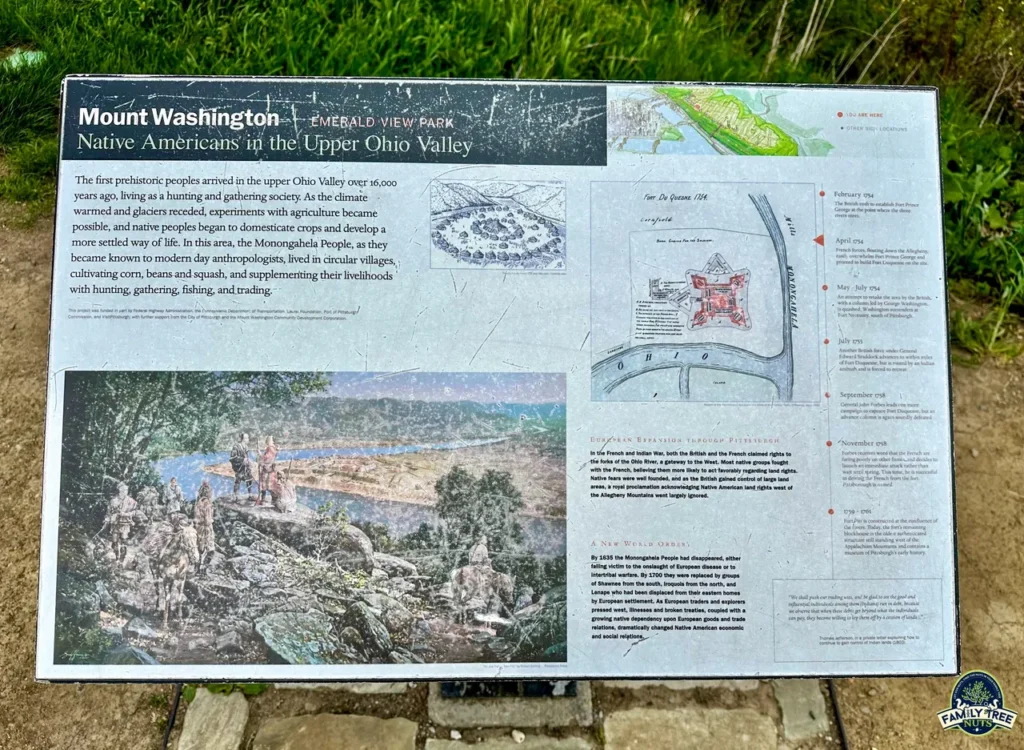
In 1781, General William Irvine took command of Fort Pitt and sent supplies to General George Rogers Clark for his expedition into Ohio against the tribes in retaliation for the massacre at Blue Licks. Be sure to see our videos about General George Rogers Clark and the Battle of Blue Licks. Fort Pitt continued to be an important strategic location for supplies and staging for the 1790s Northwest Indian Wars in modern-day Ohio and Indiana. In 1792, General “Mad” Anthony Wayne ordered the construction of Fort Lafayette, later called Fort Fayette, to be constructed about a half of a mile away from Fort Pitt. At that time, Fort Pitt was permanently demolished. However, the area remained in strategic importance until the end of the War of 1812.
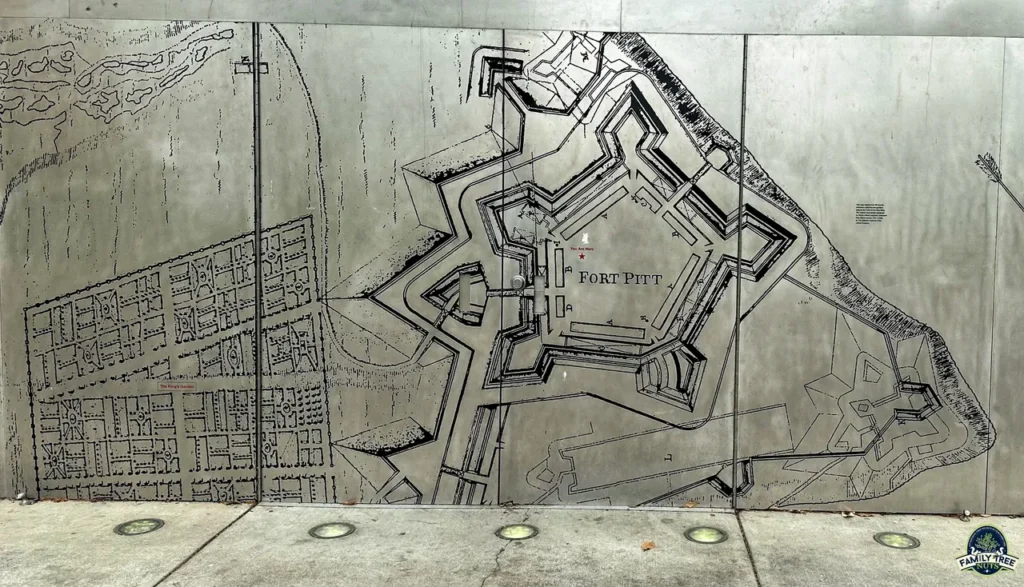
I’d be amiss if I didn’t mention another important event in American history that the Fort Pitt area was involved in. The young United States struggled to raise the money it needed to pay the debts that they had incurred during the Revolutionary War. In 1791, the United States Secretary of the Treasury Alexander Hamilton proposed a tax on distilled spirits. This tax began to be called the “whiskey tax”. It was devastating to farmers west of the Allegheny Mountains because it was easier and more profitable for them to sell and ship their crops in barrels than in bushels. By 1794, the Pittsburg area became a hotbed of protests and armed conflict between the government and rebels fighting against the tax. President George Washington himself led 13,000 troops to Western Pennsylvania to bust the rebellion. Upon this act by the President, the rebels dispersed and what would be called the Whiskey Rebellion was ended.
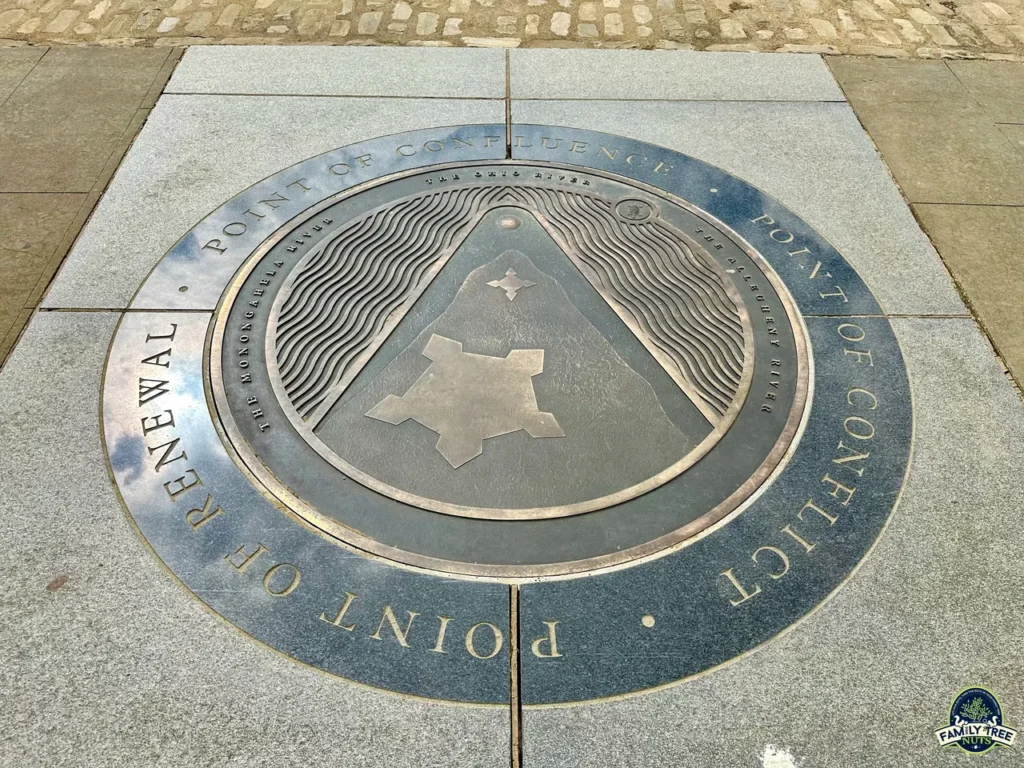
Today, the area is called Point State Park which you can visit and walk in the footsteps of those that participated in important American historical events. You can walk all the way to the tip, the exact spot that the Ohio River is formed, and stand at this important “point of renewal, point of confluence, and point of conflict”. The outlines of Fort Duquesne and Fort Pitt are laid out in concrete so you can see the footprint of the forts. You will also want to visit the blockhouse and the first-class Fort Pitt Museum. You will want to check out the parks spectacular views of the city, and if you are a fan, Pittsburg’s sports stadiums. Unless you are a Cincinnati Bengal fan like me.

So now we know some of the rich history of Fort Pitt, and it’s important impact on American History. What do you think? Did you know that this historical treasure existed? What are your thoughts about the major events that took place here? Have you ever been here, or do you now plan to visit? We’d love to hear what you have to say in the comments below. We are proud to share this brief history of Fort Pitt with all of you. Be sure to check out our video below.
-Col. Russ Carson, Jr., Founder, Family Tree Nuts
